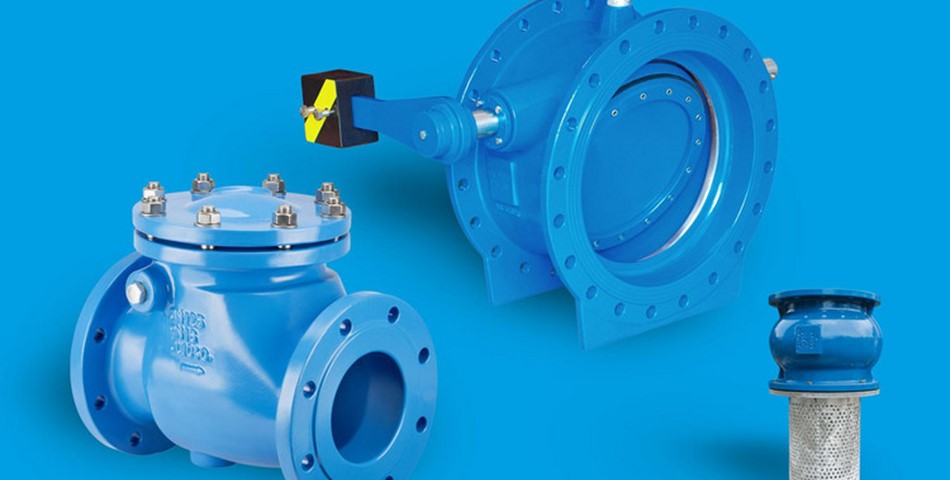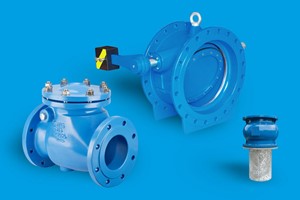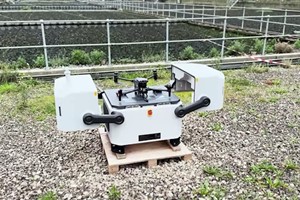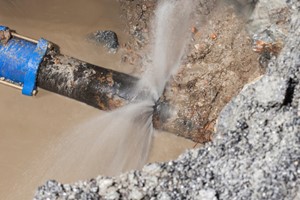What are check valves?
Check valves are fluid control devices that restrict the flow of media in a piping system to one direction. This broadly defined check valve function plays different roles in various industries. Also known as non-return valves, one-way valves, or backflow preventers, check valves prevent flowing media from flowing back upstream.
Applications of check valves
Protection of upstream equipment
Backflow can easily damage meters, compressors, filters, pumps, and other devices built for unidirectional flow. Water hammer is another potentially dangerous phenomenon. Check valves can help reduce the effect of water hammers, especially when the valve is equipped with an end stage damper.
Preventing media contamination or mixing
By preventing reverse flow, check valves prevent the mixing of different media between two reservoirs. For example, in a water treatment plant, check valves prevent treated water from flowing back into the untreated water reservoir.
Preventing drainage
When media is being pumped from a suction reservoir to a discharge reservoir, reverse flow is highly likely to occur when the pump is stopped. Check valves are used to prevent this. The valve type commonly used for this is the foot valve.
How do check valves work?
A check valve comprises two ports - an inlet and an outlet - and a shutoff/closing mechanism. The unique characteristic of check valves that distinguishes them from other types of valves such as ball and butterfly valves is that, unlike these valves that require some form of actuation to operate, check valves are self-operating. Check valves function automatically, relying on differential pressure to effect control. In their default position, check valves are closed. When media flows in from the inlet port, its pressure opens the closing mechanism. When the inflow pressure drops below the outflow pressure due to flow being shut off, or the pressure on the outlet side becomes greater for any reason, the closing mechanism immediately closes the valve.
The closing mechanism in check valves is usually held in place by a loaded spring, a counterweight, or gravity. For the valve to open, the media has to overcome the force of the spring or closing mechanism.
Check valves do not operate based on differential pressure alone. If that were the case, a trickle would be enough to open the valve. Therefore, specific minimum pressure is required to open a check valve. This is known as the cracking pressure. The cracking pressure of a check valve is the specified minimum inlet pressure required to open a check valve, just enough to allow detectable flow.
Types of check valves
Various types of check valves are categorized according to different characteristics such as design, mode of operation, valve material, and size, with the most popular characteristic for classifying check valves being design/build. The following are the commonly used types of check valves.
Swing check valves
A swing check valve is built with a disc hinged, at one edge, to the valve body. When fluid flows into the valve with sufficient pressure, it forces open the disc, allowing flow. The disc shuts off when there is reverse flow or when the inflow pressure is no longer sufficient. These valves are suitable as water check valves and are widely used in water distribution systems.
Tilting disc check valves
These valves are built with a double-eccentric disc and are usually designed to be installed between two flanges. They are suitable for large diameter flow and require relatively high pressure to open. Tilting disc check valves are not suitable as wastewater check valves as debris can get stuck in the portions of the valve that are in the flow path.
Ball check valves
Ball check valves feature a ball as the closing mechanism. The inflow pressure lifts the ball off its seat and into a dedicated chamber. When the inflow pressure drops, the ball returns to its seat, shutting off the flow and preventing reverse flow. A ball check valve will perform excellently as a sewage check valve because the closing mechanism doesn't interfere with the flow in the open position.
Foot valves
Foot valves are commonly used in water pumping lines to prevent water from draining in the event of a pump stop. They are installed in the pump's suction line and usually feature a screen that filters out debris from the reservoir. This feature makes the foot valve a suitable check valve for pump applications. Since this valve type works with gravity, the installation must be vertical in the pipeline.
Axial Silent Check valves
These valves close with the help of a spring. Axial silent check valves are fast closing valves and prevent pumps from rotating in the reverse direction when the backflow occurs, as this can damage the pump.
Industrial Valves Market Overview, Industry Size, Growth, Trends, Top Companies and Report 2022-27
The global industrial valves market reached a value of US$ 64.04 Billion in 2021. Looking forward, IMARC Group expects the market to reach US$ 97.19 Billion by 2027, exhibiting at a CAGR of 7.3% during 2022-2027.
Industrial valves refer to mechanical devices that regulate, direct, and control the flow of fluids, gases, liquids and slurries. They are heavy-duty industrial strength valves that form essential components in the piping system for managing various processes. These valves consist of the main body, stem, and seat made from polymers, rubber, metals, and materials to avoid leakage. They are manufactured with carbon steel, cast iron, stainless steel, and high functioning metal alloys to enhance flow control. They are used to handle high pressure by opening, closing, and partially obstructing various passageways. As a result, they find applications across the water and wastewater, oil and power, food and beverage, and chemical industries.











